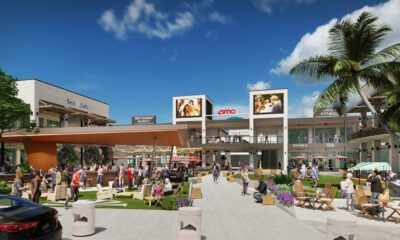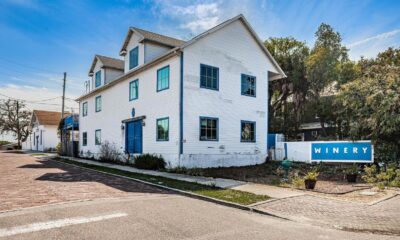Thrive
Why a city’s district designations are important

Soho, Hyde Park, Tribeca, Fremont, Ballard, Dumbo. What’s in a name? When it comes to a neighborhood or business district, a name is its identity, and that identity can bring important value to residents and business owners.
These monikers are often born through the effort to create a sense of place in an area once forgotten, and sometimes come with funding for marketing and economic development. In the 1970s, artists began getting priced out of Manhattan’s SoHo (South of Houston) neighborhood, so they moved further south and branded the area “Tribeca.” The “Triangle Below Canal” soon gained its own trendy artistic reputation. The SoHo name is now so iconic there are SoHos in other cities, including Tampa with its neighborhood around South Howard Avenue.
London’s famous Hyde Park name has been borrowed more than 20 times in the United States – by cities including Chicago, New York, Los Angeles, Boston and Tampa.
In St. Petersburg, districts have emerged as business owners try to create cohesion where a sense of community had waned. Perfect examples are the Edge District, Grand Central and The Deuces, all of which are part of Florida’s Main Street Program, providing technical assistance for traditional historic commercial corridors.
These “place brands” are useful in developing expectations for visitors. According to former City Councilman and longtime community leader Jeff Danner, the stretch of Central Avenue to the east and west of Interstate 275 once included 10 strip clubs and a single restaurant.
In 2001, new business and property owners formed the Grand Central District. “The name was sort of funny,” Danner says. “We wanted to use the word ‘Central,’ but there was nothing ‘Grand’ about it, with 80 percent vacancy. The name stuck.”
Today that same area boasts more than 40 restaurants and bars, frequented – and often owned – by residents of adjacent Kenwood. Today, visitors head to the area knowing that they’ll find eclectic and unusual concepts like Nitally’s Thai-Mex restaurant, Pom Pom’s gourmet sandwiches and the, and Craftsman House’s combination of art, food, and music.
A decade ago, the Edge district, adjacent to Tropicana Field, lacked the population density of nearby downtown. With fewer property owners controlling bigger pieces of land, larger mixed retail/residential developments have replaced lots that were bulldozed during the era when the stadium was built. This area has drawn young professionals who want to live within walking distance of work and nightlife.
Rather than refer to “That Area of Industrial Buildings Along the Old Train Tracks,” the name Warehouse Arts District was chosen as the new brand by entrepreneurial artists after the Dome Industrial District laid fallow for decades. Behind all that corrugated aluminum, artists create paintings, sculptures, glass and pottery that reach a world-wide audience.
As in SoHo, artists in St. Petersburg were feeling the pressure from rising rents, particularly when nearly 50 artists were displaced by the sale of Salt Creek Artworks. Sculptor Mark Aeling saw the need to organize and protect the Warehouse Arts District, while drawing attention to the amazing work taking place right under our noses. Like-minded artists started by renting a trolley to extend the Second Saturday Art Walk into their area. “The first Art Walk trolley was a disaster,” recalls Aeling. “We might have had two people use the trolley. But we retooled, made some changes and came back a few months later with a better plan.” Aeling and others formed the nonprofit ArtsXchange on three acres in the center of the district, to maintain below-market art studio space.
“What started as an effort to support and maintain affordable space for artists evolved into a community revitalization project stretching from First Ave North to Midtown,” says Aeling. “Our first meeting had maybe 10 people. The third meeting had over 100 people who wanted to be part of the district.”
Other areas, such as the Skyway Marina District along 34th Street South and the Innovation District on the waterfront south of downtown, are organized around promoting and attracting not just customers, but investment. The combination of companies, organizations and academic programs in the Innovation District offer opportunities for collaboration and help attract professionals from outside the region. The Skyway Marina District is adjacent to Eckerd College, and includes a St. Pete College campus, and waterfront residential neighborhoods. The district’s highway access and available land give it potential for development and growth that’s unique in densely developed St. Petersburg.
The common thread is that successful districts aren’t created by just clever names and marketing. It takes hard work to develop that identity and sense of community.







